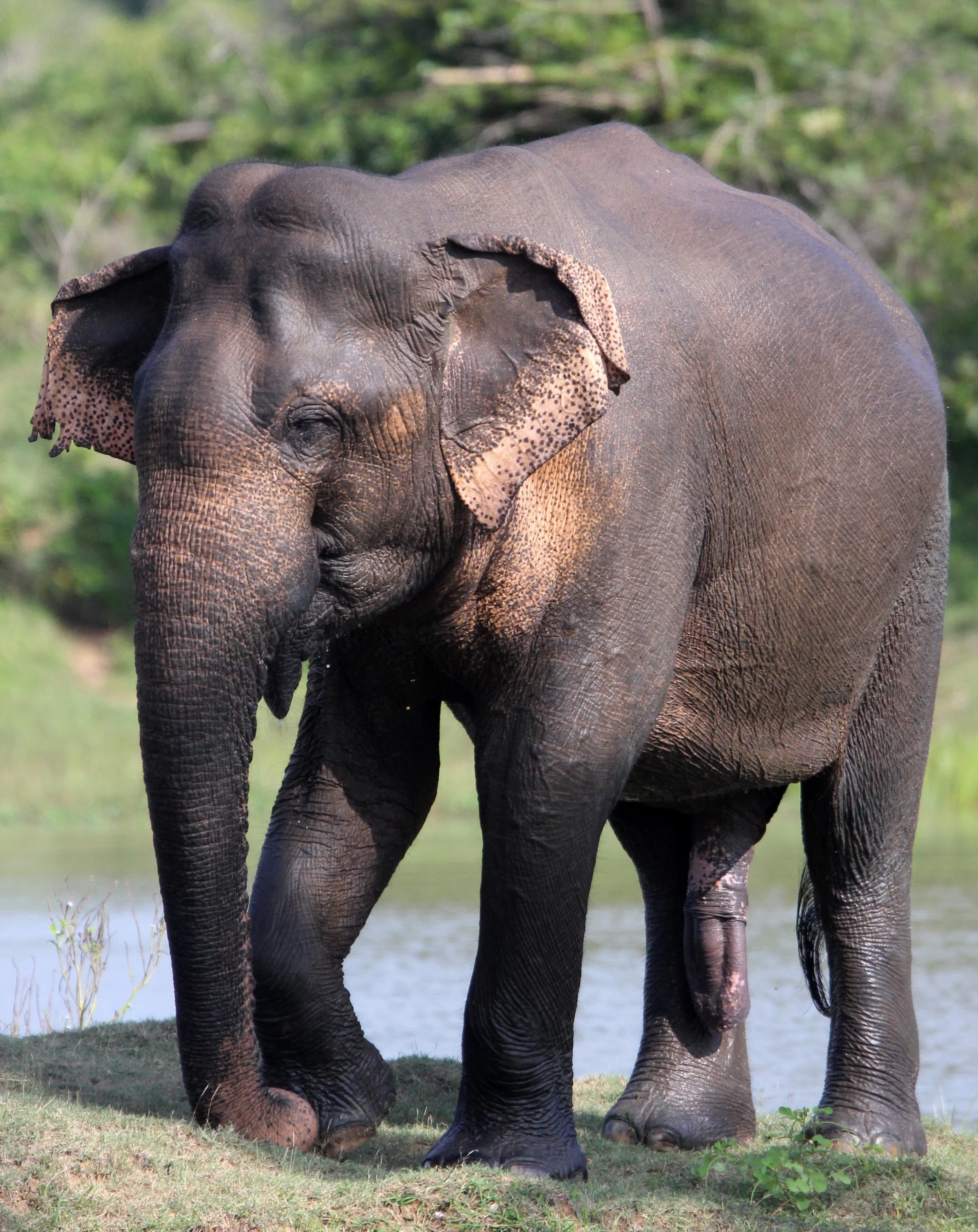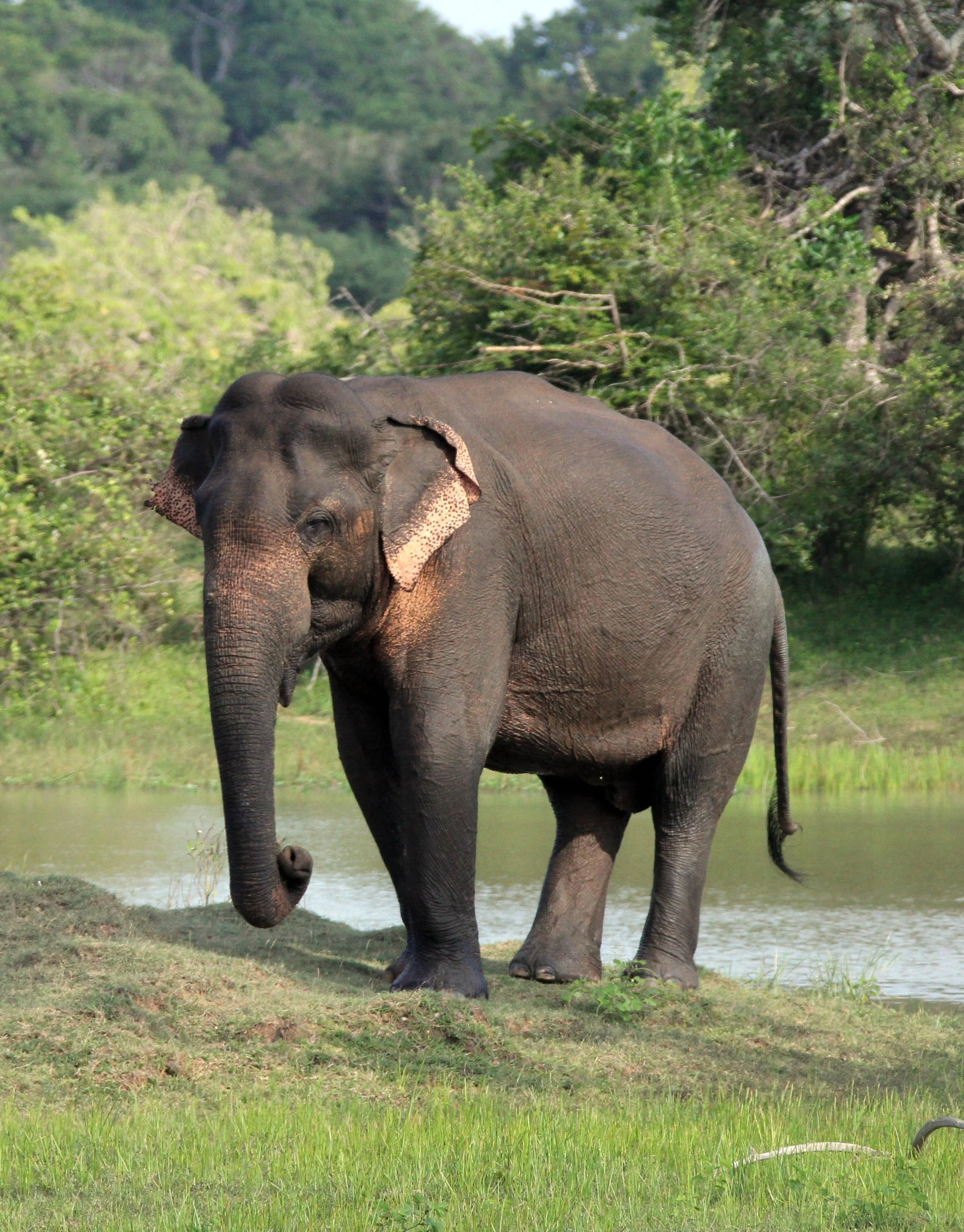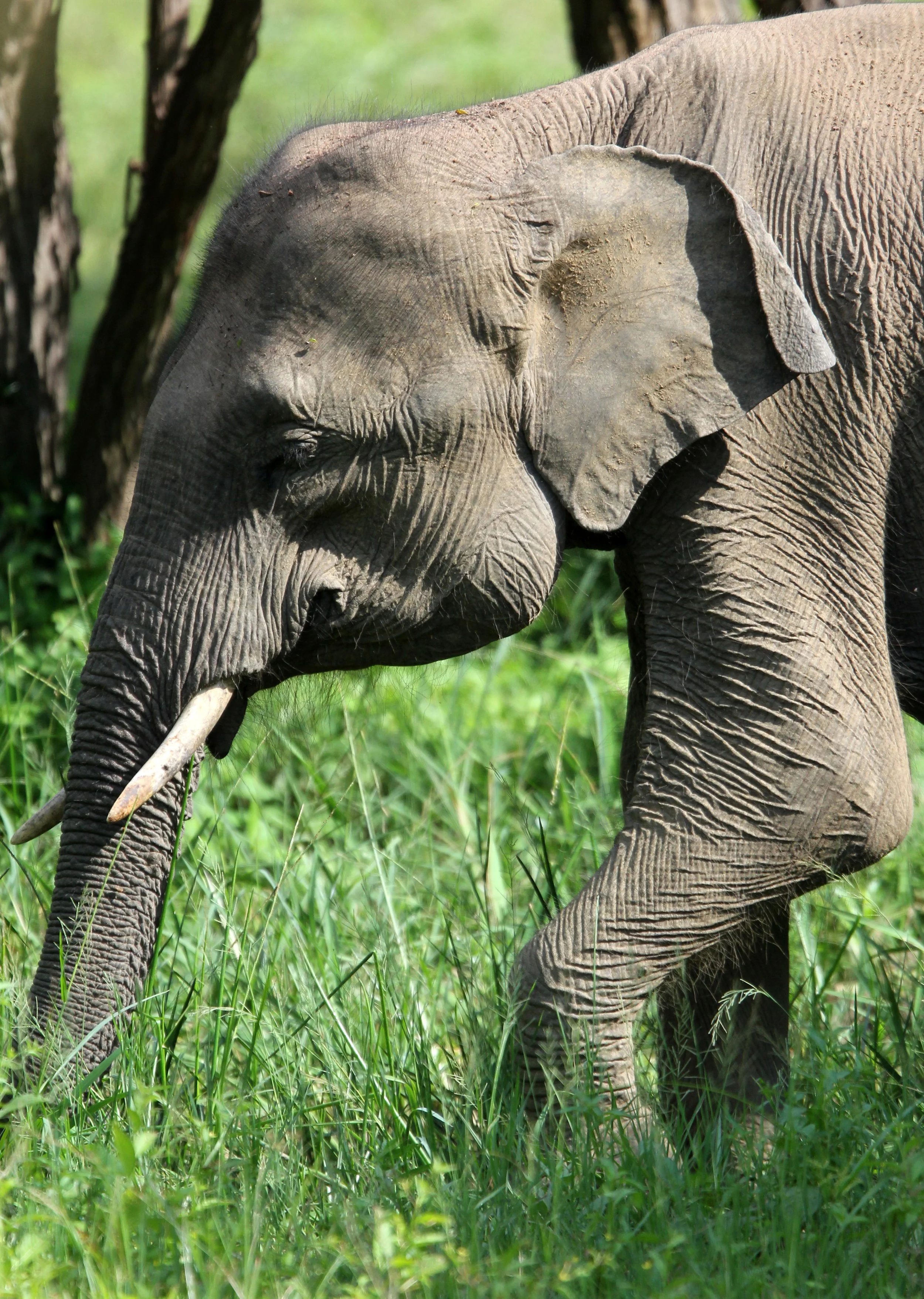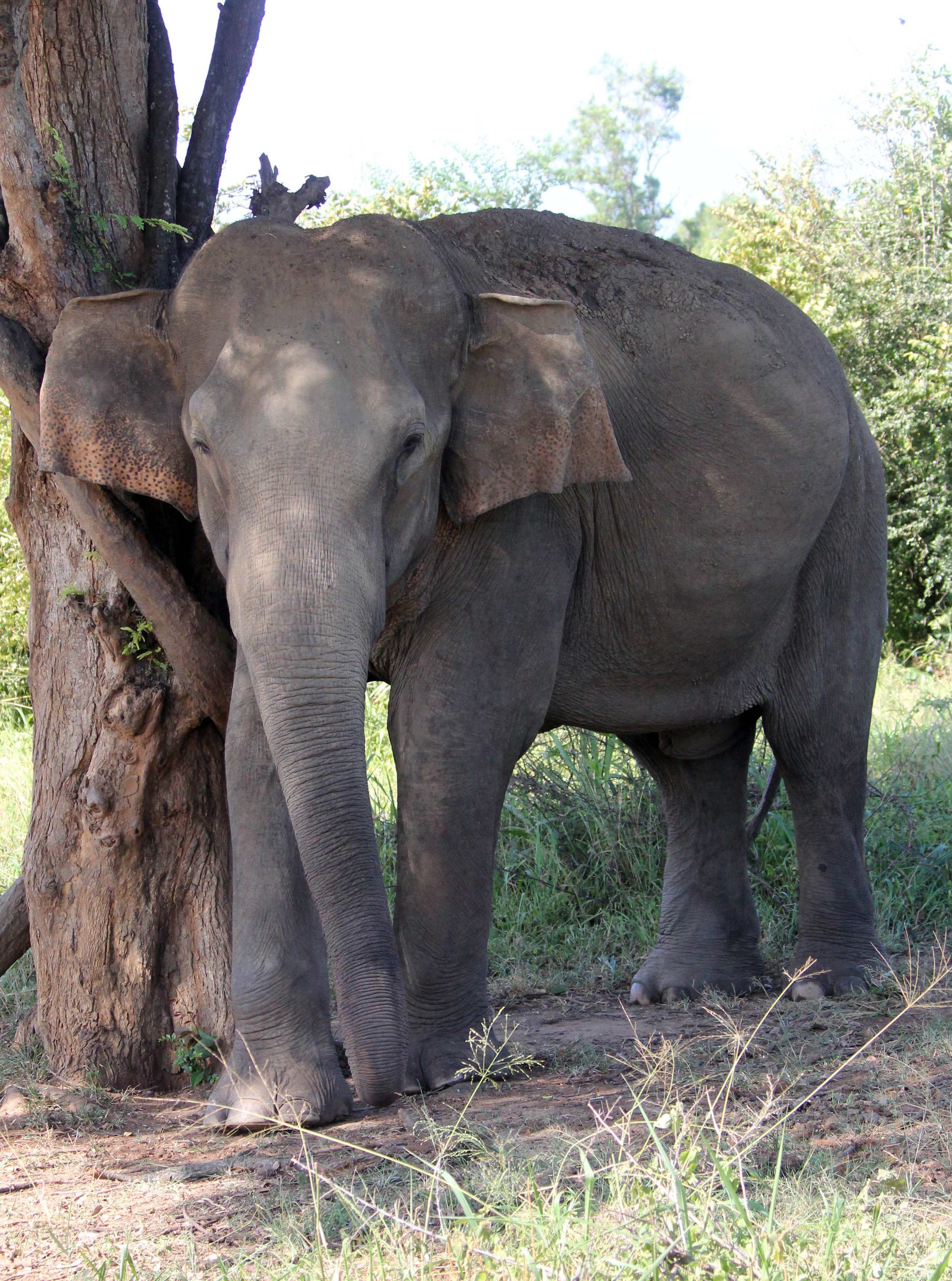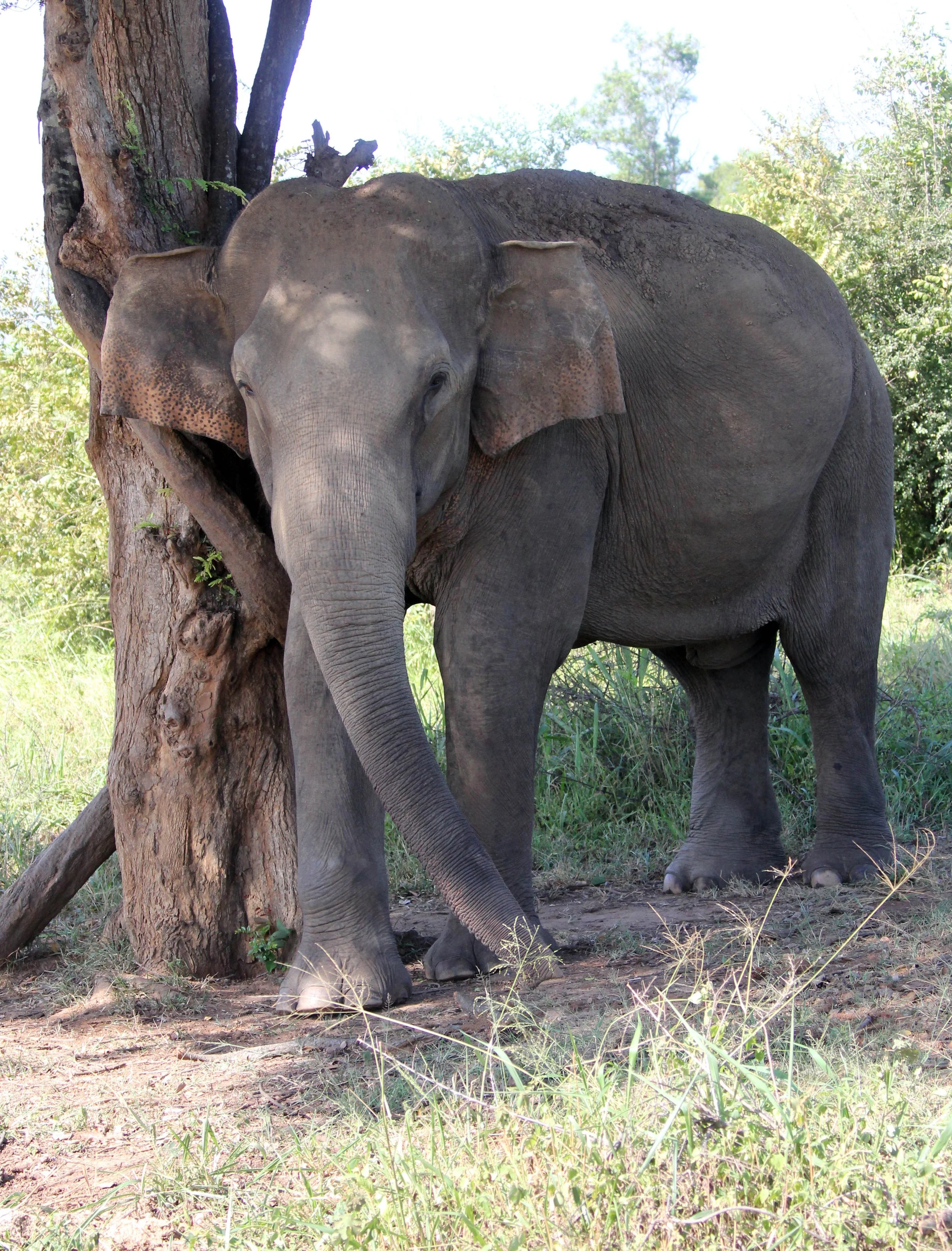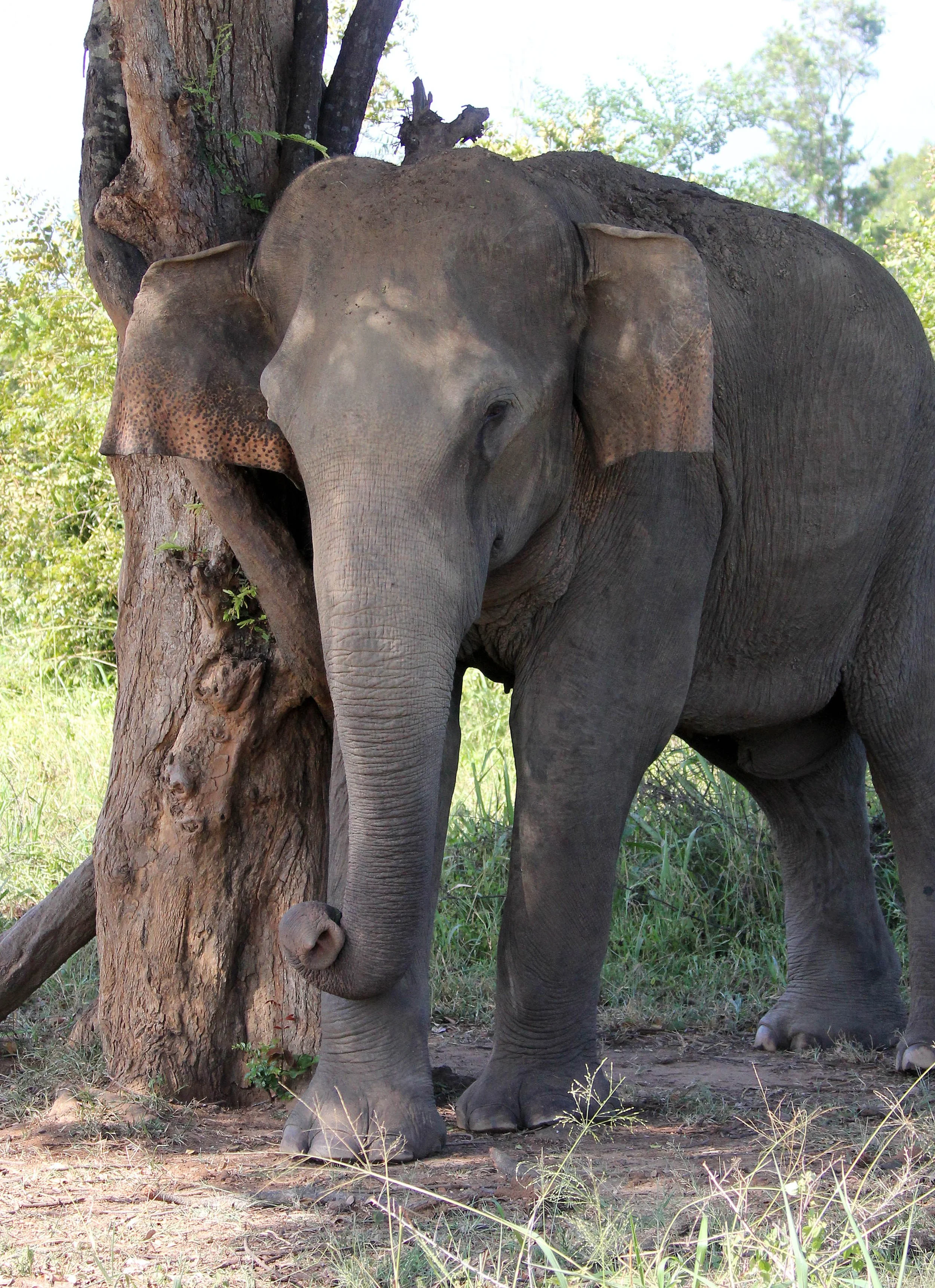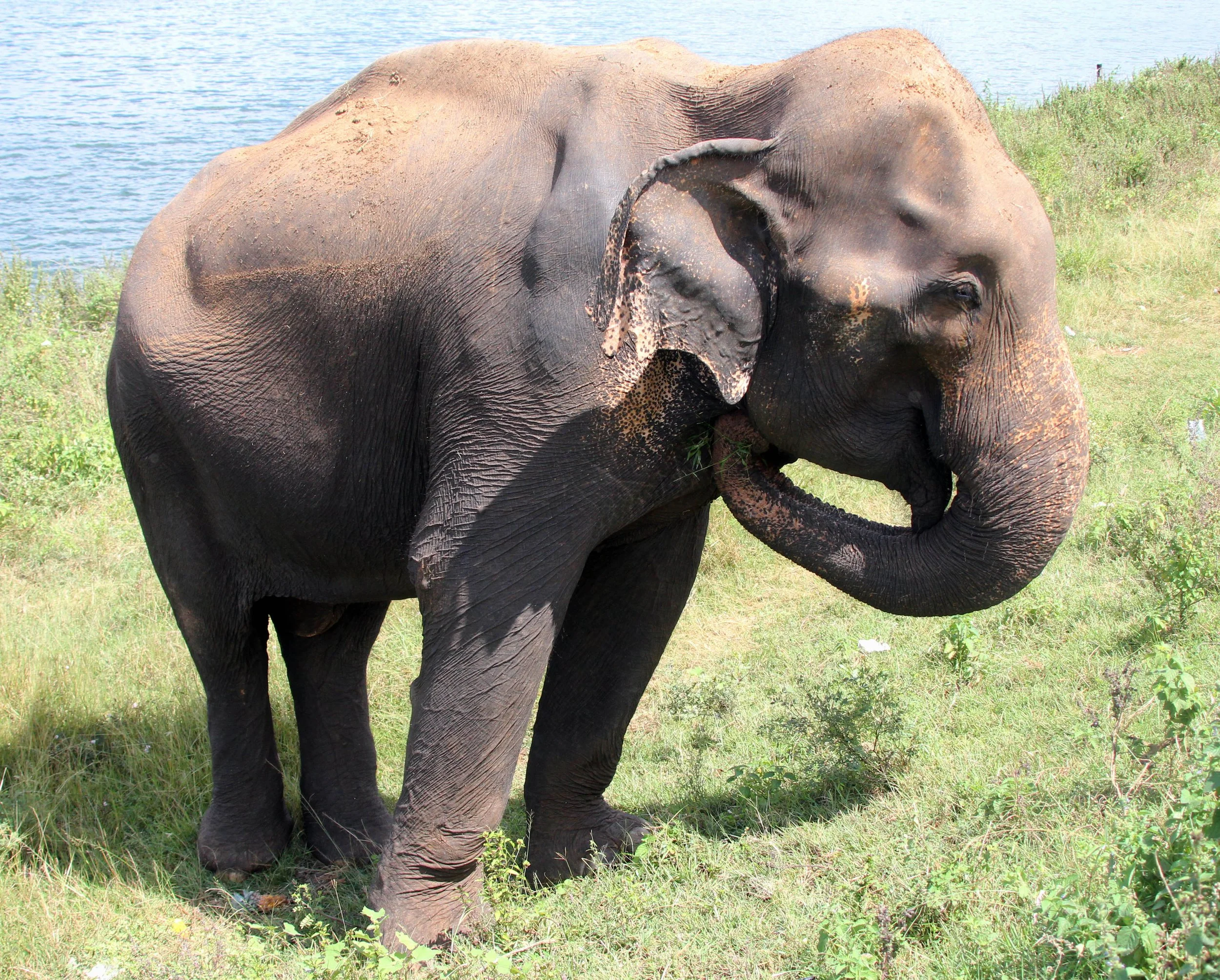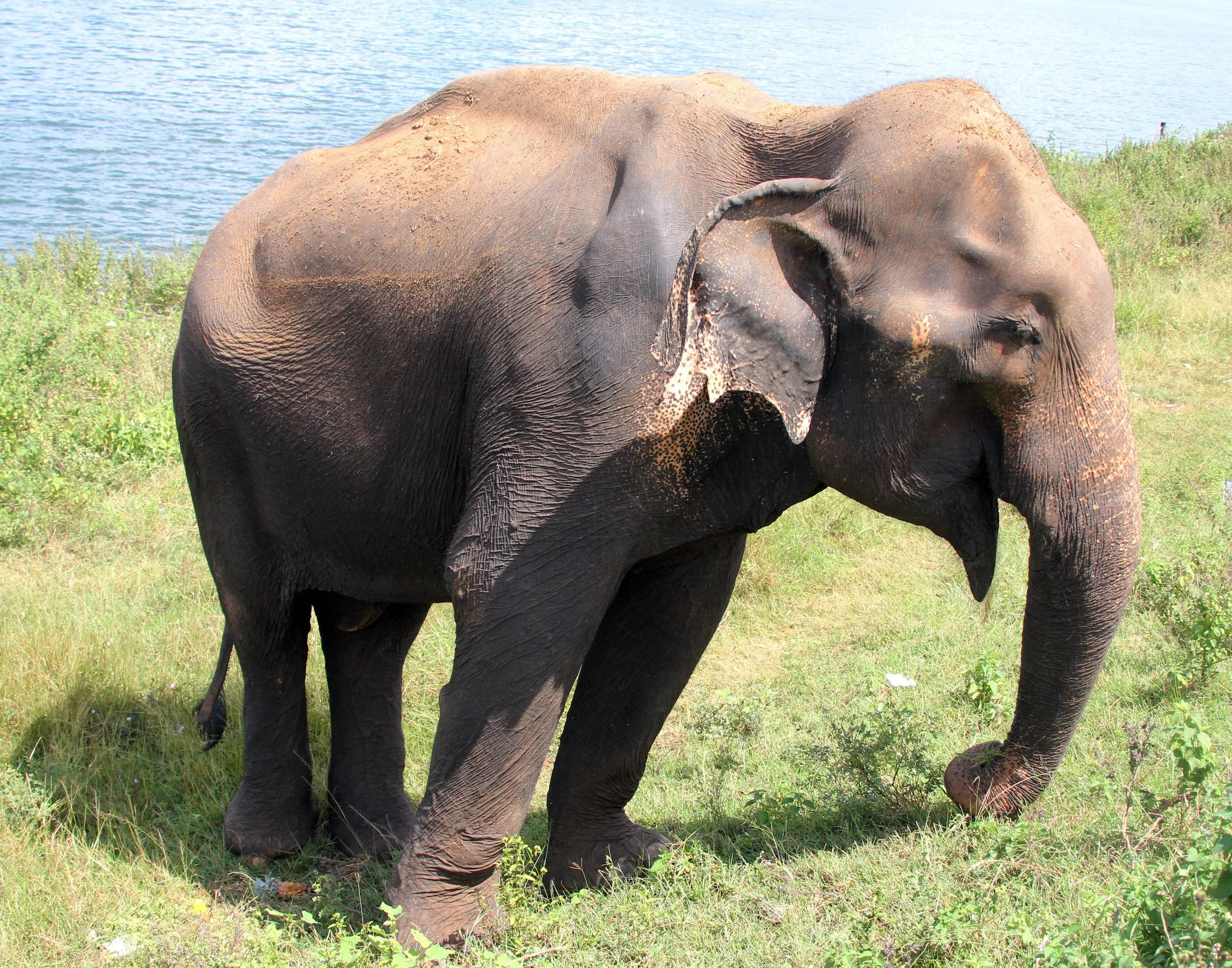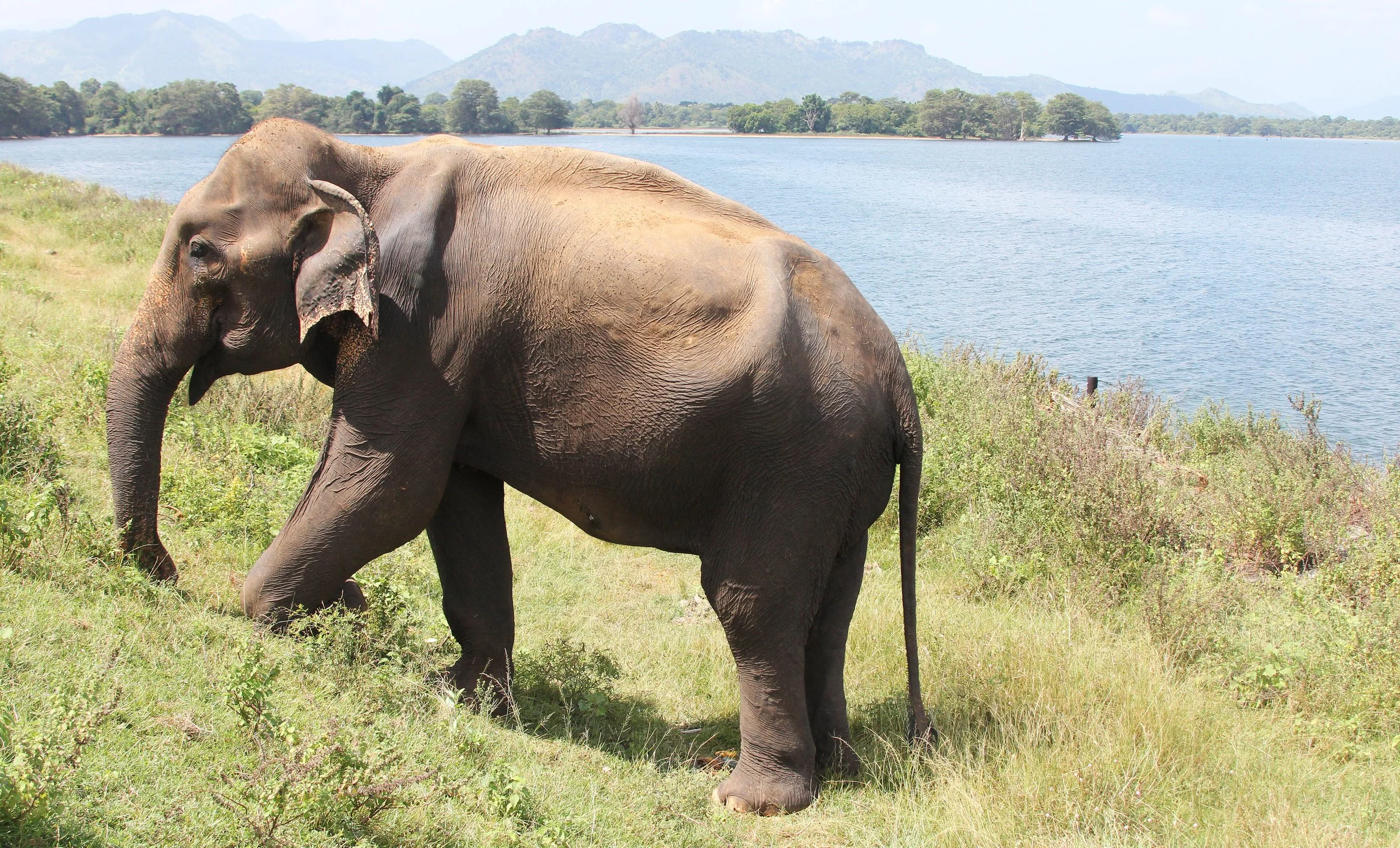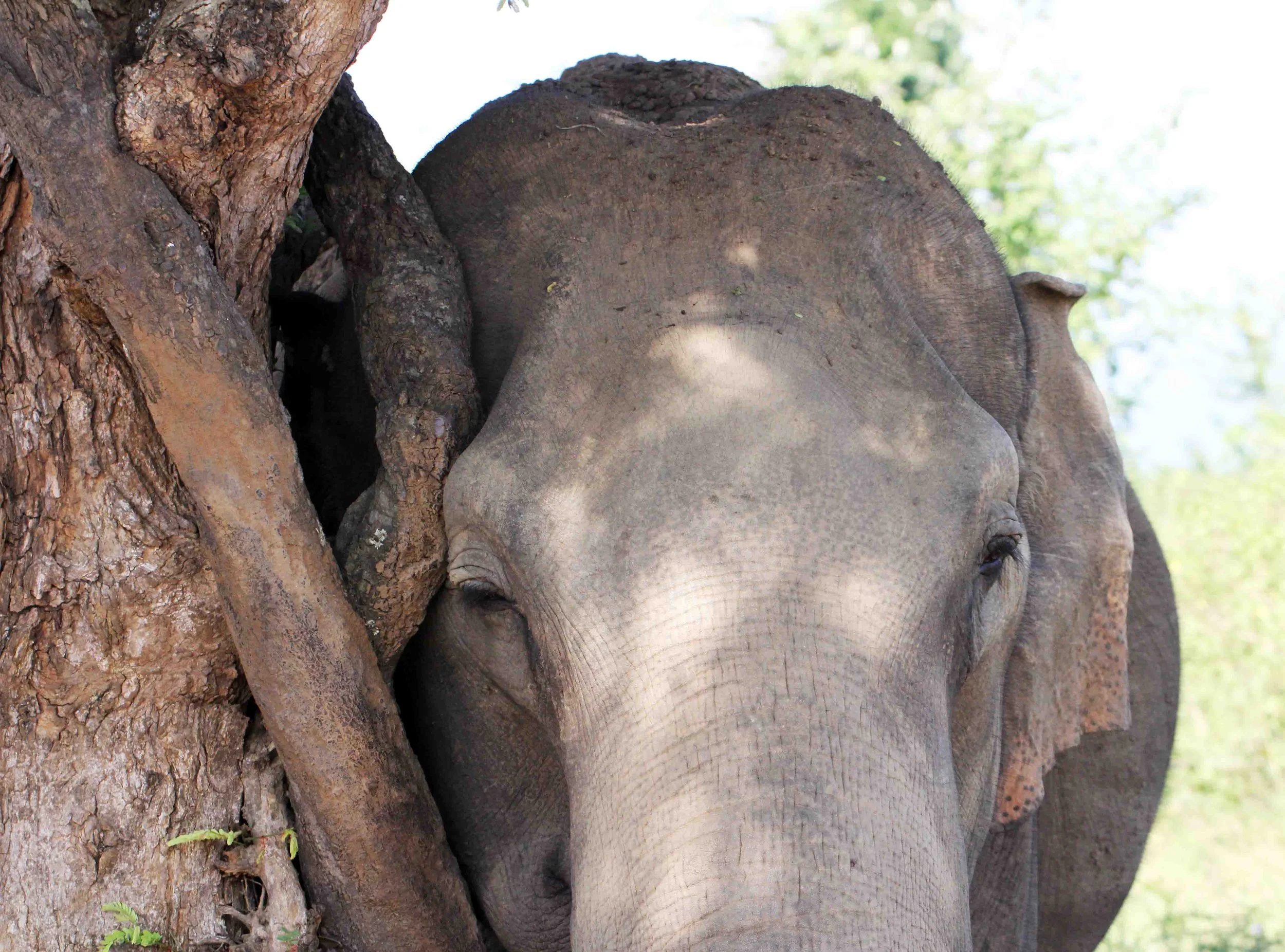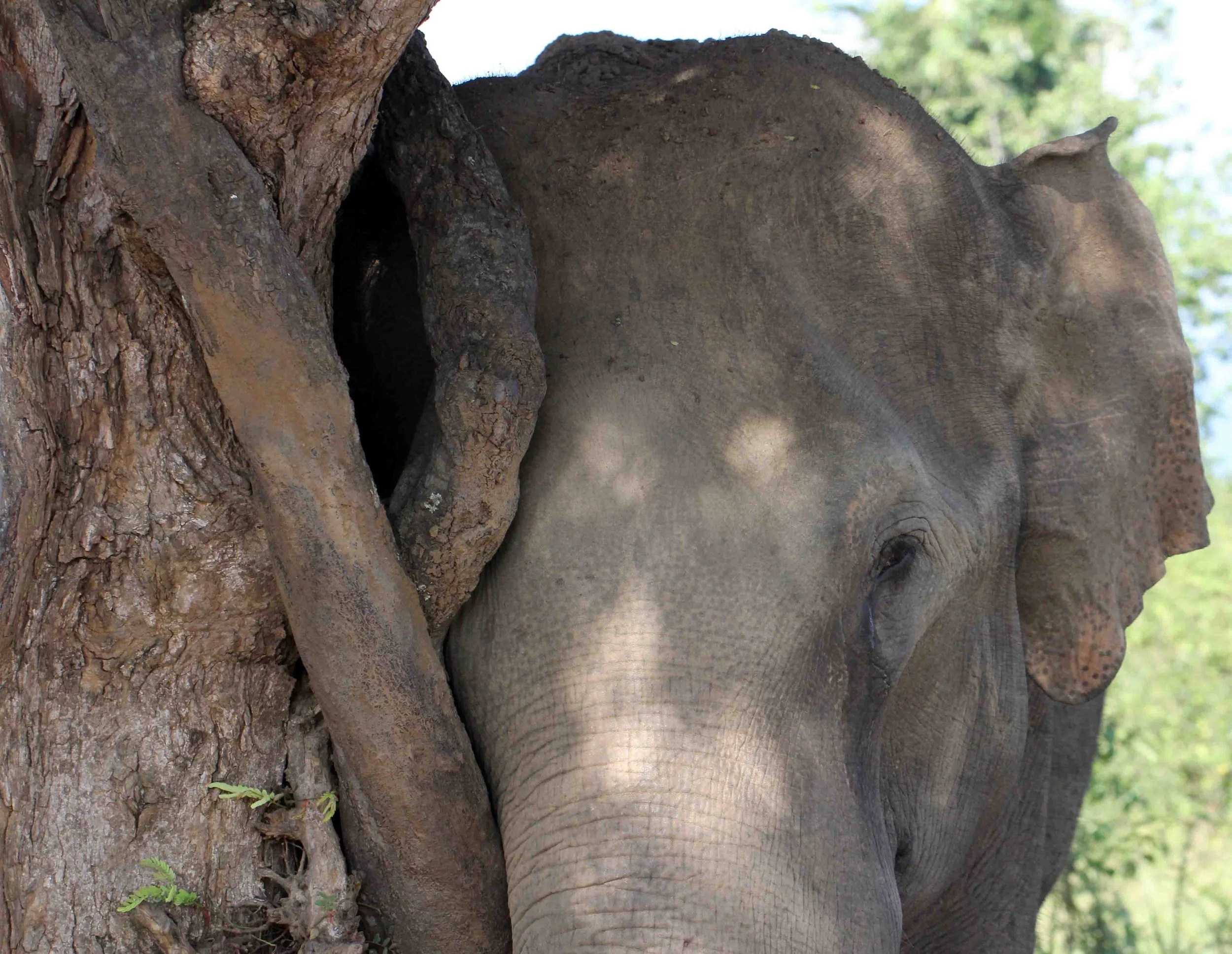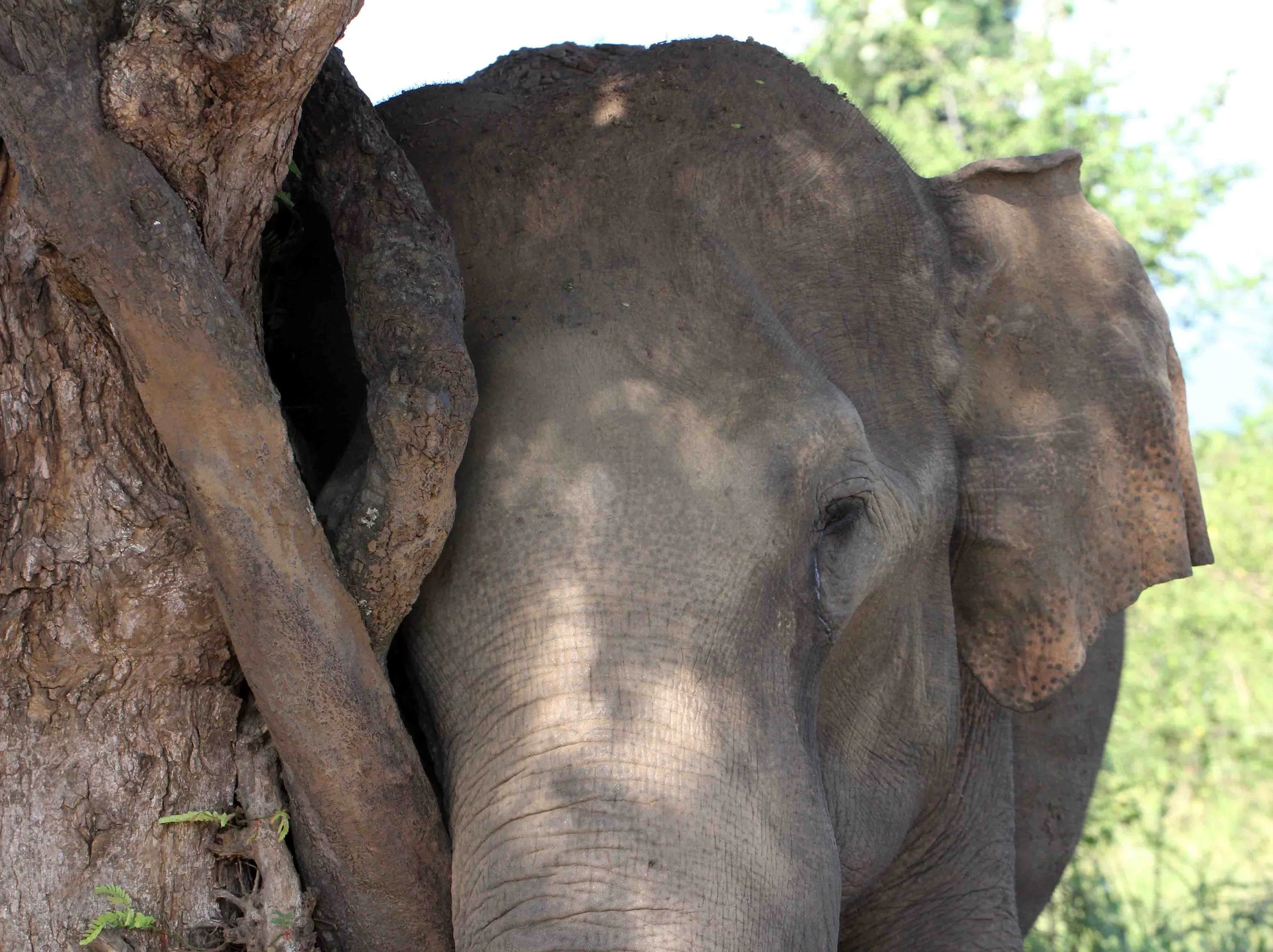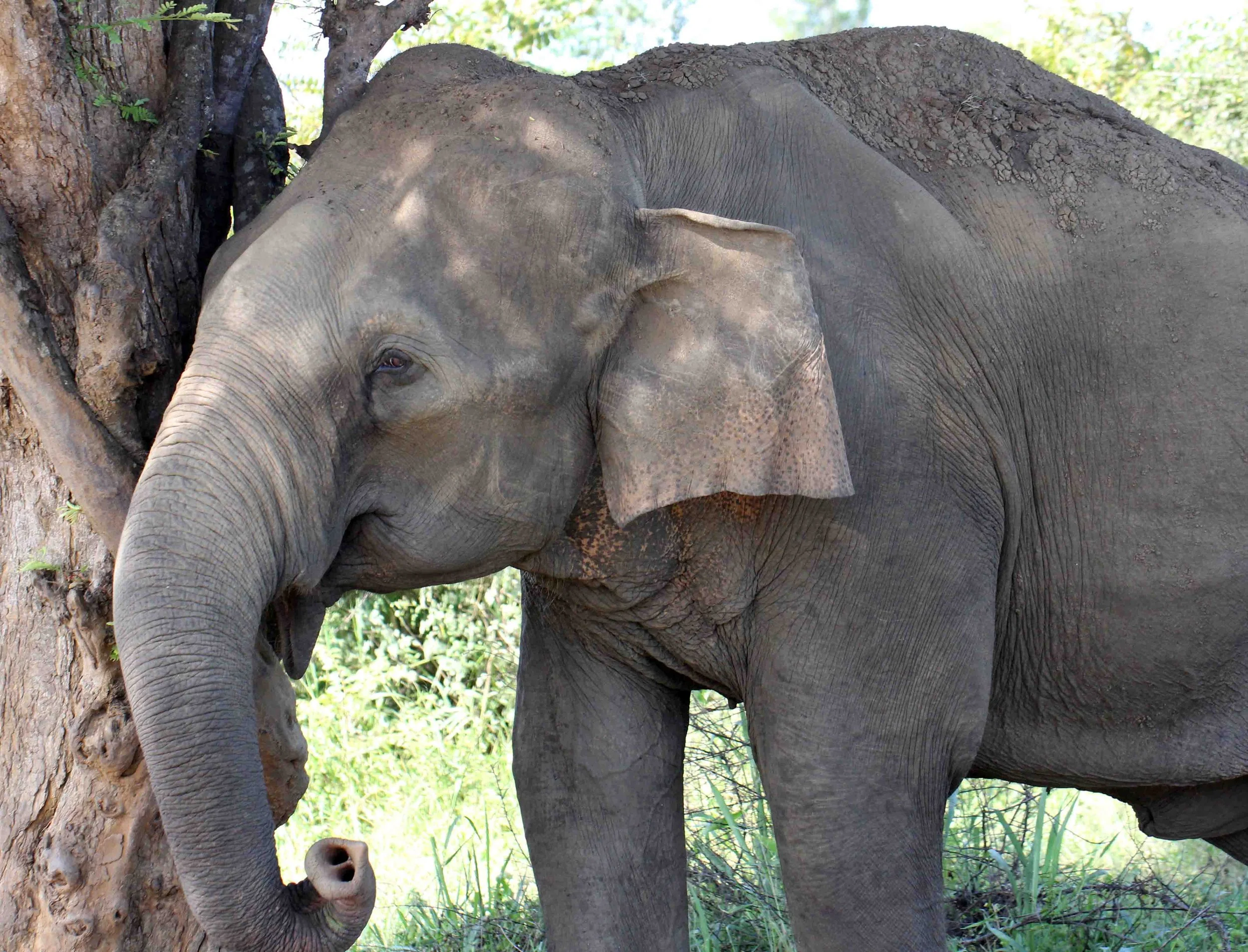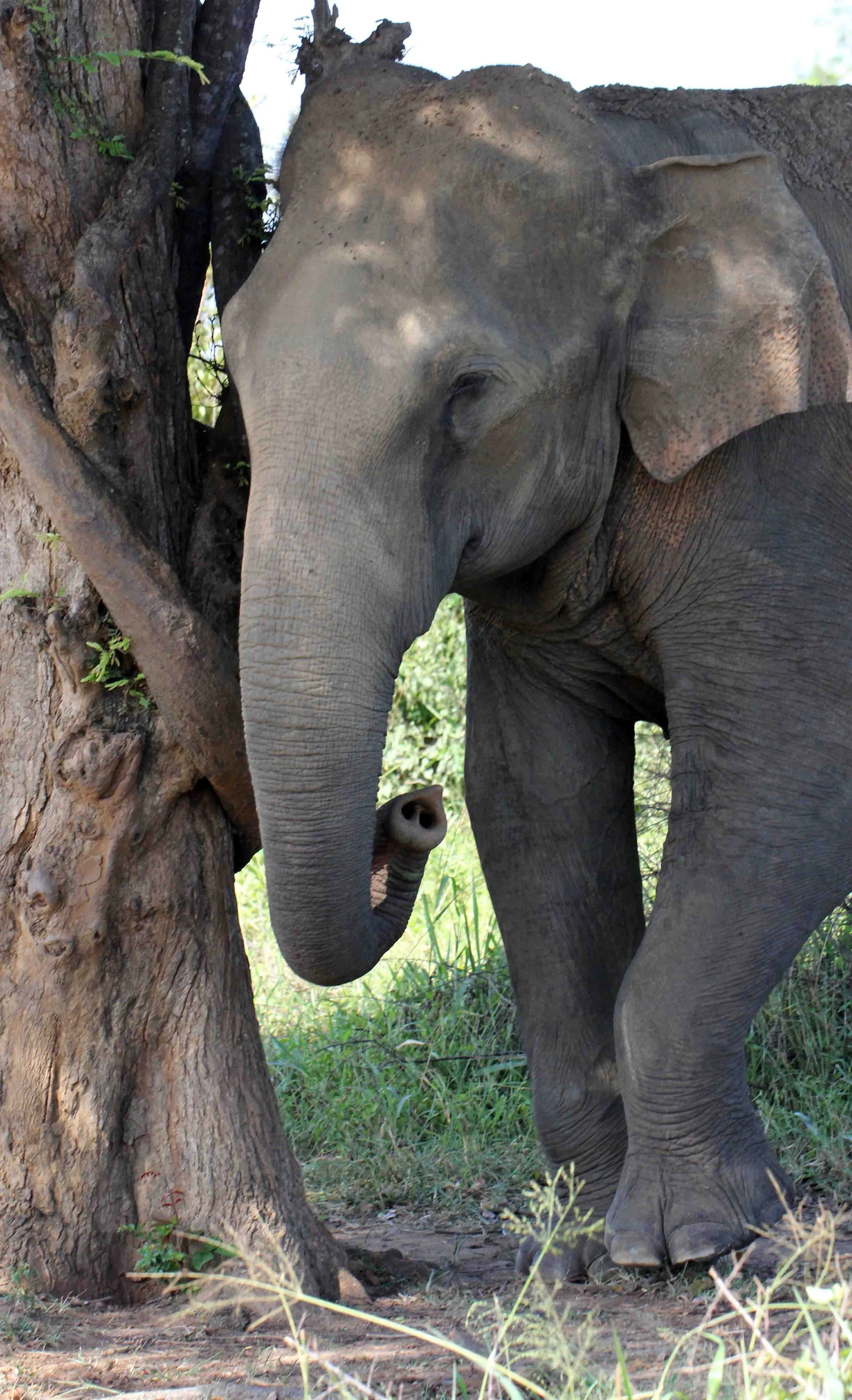The Sri Lankan elephant (Elephas maximus maximus) is native to Sri Lanka and one of three recognised subspecies of the Asian elephant. It is the type subspecies of the Asian elephant and was first described by Carl Linnaeus under the binomial Elephas maximus in 1758. The Sri Lankan elephant population is now largely restricted to the dry zone in the north, east and southeast of Sri Lanka. Elephants are present in Udawalawe National Park, Yala National Park, Lunugamvehera National Park, Wilpattu National Park and Minneriya National Park but also live outside protected areas. It is estimated that Sri Lanka has the highest density of elephants in Asia. Human-elephant conflict is increasing due to conversion of elephant habitat to settlements and permanent cultivation.
In general, Asian elephants are smaller than African elephants and have the highest body point on the head. The tip of their trunk has one finger-like process. Their back is convex or level. Females are usually smaller than males. Some males have tusks.
Sri Lankan elephants are the largest subspecies reaching a shoulder height of between 2 and 3.5 m (6.6 and 11.5 ft), weigh between 2,000 and 5,500 kg (4,400 and 12,100 lb), and have 19 pairs of ribs. Their skin colour is darker than of indicus and of sumatranus with larger and more distinct patches of depigmentation on ears, face, trunk and belly. Only 7% of males bear tusks. Average adult elephant tusks grow up to about 6 feet. It can weight up to 35 kg (77 lb). Longest tusks of 7 feet 6 inches long was found in Millangoda Raja (1938-30 July 2011).
The Sri Lankan subspecies designation is weakly supported by analysis of allozyme loci, but not by analysis of mitochondrial DNA (mtDNA) sequences.
In July 2013, a dwarf Sri Lankan elephant was sighted in Udawalawe National Park. It was over 1.5 m (5 ft) tall but had shorter legs than usual and was the main aggressor in an encounter with a younger bull.
Sri Lankan elephants are restricted mostly to the lowlands in the dry zone where they are still fairly widespread in north, south, east, north-western, north-central and south-eastern Sri Lanka. A small remnant population exists in the Peak Wilderness Sanctuary. They are absent from the wet zone of the country. Apart from Wilpattu and Ruhuna National Parks, all other protected areas are less than 1,000 km2 (390 sq mi) in extent. Many areas are less than 50 km2 (19 sq mi), and hence not large enough to encompass the entire home ranges of elephants that use them. In the Mahaweli Development Area, protected areas such as Wasgomuwa National Park, Flood Plains National Park, Somawathiya National Park and Trikonamadu Nature Reserve have been linked resulting in an overall area of 1,172 km2 (453 sq mi) of contiguous habitat for elephants. Nevertheless, about 65% of the elephant's range extends outside protected areas.














